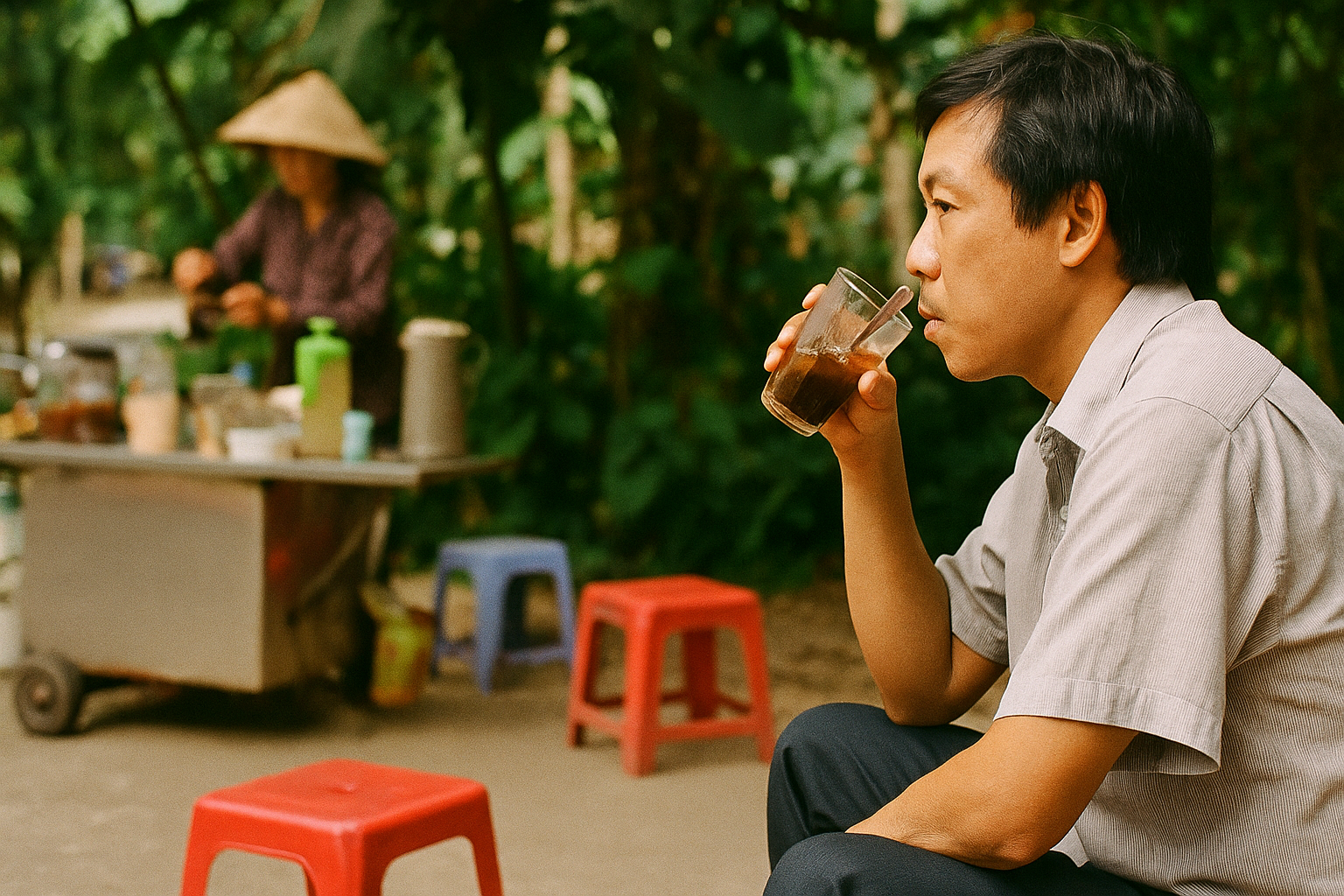About First Phin First: Vietnamese Coffee in NYC
Our Story
First Phin First is a Vietnamese coffee service based in New York City that grew from our simple love for Vietnamese coffee. Our coffee is brewed with a traditional phin filter - the same tool used across Vietnam for generations, and the one we use to make our morning coffee before emails, errands, or even making the bed.
That’s where the name comes from:
First phin, first.
We want to see Vietnamese coffee better represented in the world. Not hidden on page 4 of a menu, but front and center, where it belongs. We serve strong, flavorful Vietnamese coffee brewed the right way, using robusta beans sourced directly from Vietnam.
Meet the Founders
Meet the duo behind First Phin First: Chad and Thao.
Chad made the leap from software engineering, while Thao is currently working as a data scientist. Chad brings a love for cooking and creating, and Thao drinks each cup of coffee with the same excitement as the first one she ever had.
We started First Phin First to create something people would crave, remember, and root for. Together, we share a love for tennis, late-night brainstorming, and strong Vietnamese coffee. It’s what kickstarts our mornings and fuels us through each day, with passion carrying us the rest of the way.
One of our dreams is to serve Vietnamese coffee right on a tennis court by blending the bold, high-focus energy of our coffee with the smooth, refined aesthetic of the sport we love.
First serve. First sip. First Phin First!!
Why planners book us
Fast quoting
Unique Drinks
Energy that lasts
Custom menus/branding
Takes less than 2 minutes to fill out our questionnaire!
What Makes Vietnamese Coffee Unique?
Introduction
Vietnamese coffee is bold, smooth, and rich in character. It first arrived in Vietnam in the mid-1800s during French colonial rule. The French introduced Arabica plants and European brewing styles, but local farmers and drinkers adapted those influences into something uniquely their own. Robusta beans, which grew better in Vietnam’s tropical climate and volcanic soil, became the foundation of the country’s coffee industry.
Without easy access to fresh milk, many turned to sweetened condensed milk, which was shelf-stable and affordable. That combination of robusta and condensed milk created a strong, balanced drink that stuck. Over time, brewing with a phin became not just a method, but a daily ritual - something shared in homes, cafés, and street corners across the country.
Today, Vietnam is one of the largest coffee producers in the world, known especially for its high-quality robusta. Vietnamese coffee has gained global recognition for offering something distinct: a flavor that’s intense, comforting, and rooted in history.
Brewed Differently: The Phin Filter
Instead of using espresso machines, Vietnamese coffee relies on a phin - a compact metal filter that brews slowly like a French press and drips gently like a pour-over. It sits directly over the cup while hot water slowly passes through the grounds, producing a strong, concentrated brew over 4–5 minutes for a single serving.
This slow drip process:
Extracts deep, rich oils and intense flavors from the robusta bean
Creates a heavier body with low acidity and strong aroma
Allows each cup to be brewed intentionally - no automation, just care and patience
What Condensed Milk Offers
Condensed milk is key to Vietnamese coffee’s signature taste. It’s not just a sweetener - it transforms the texture and balance of the drink.
Creamy texture: Thickens the body, making each sip smooth and satisfying
Sweet-salty balance: Cuts the bitterness of robusta while enhancing its nutty, chocolatey notes
Shelf-stable history: Introduced during French colonial rule, when fresh milk was scarce - locals adapted with creativity and made it their own
Together with robusta and the phin, condensed milk completes the flavor triangle of Vietnamese coffee: strong, smooth, and sweet with depth.
Why We Use Robusta Beans
While most cafes in the U.S. and Europe use arabica beans, Vietnam is the world’s #1 producer of robusta, a bean that’s naturally bolder and earthier. Robusta’s strong flavor is what makes Vietnamese coffee hold up beautifully to condensed milk and ice - no flavor gets watered down.
Arabica (what most shops use)
Mild, floral, fruity, acidic
Lower caffeine (1.2%–1.5%)
Less crema
~60% more fats & sugars (slightly higher calories)
Requires careful cultivation
Robusta (Vietnamese standard)
Bold, chocolatey, slightly bitter
Higher caffeine (2.2%–2.7%)
More crema, thicker mouthfeel
Lower in fats, sugars, & calories
More resilient and sustainable farming
Break the Coffee Routine - Go Vietnamese
Most coffee car offer what your guests already know: espresso, cold brew, and lattes.
We offer something different. Our Vietnamese coffee is brewed slowly with a phin filter, sweetened with condensed milk, and steeped in a tradition that delights both newcomers and longtime fans.
From the bold smoothness of cà phê sữa đá to the savory richness of cà phê muối, this isn’t just a drink - it’s a conversation starter.









